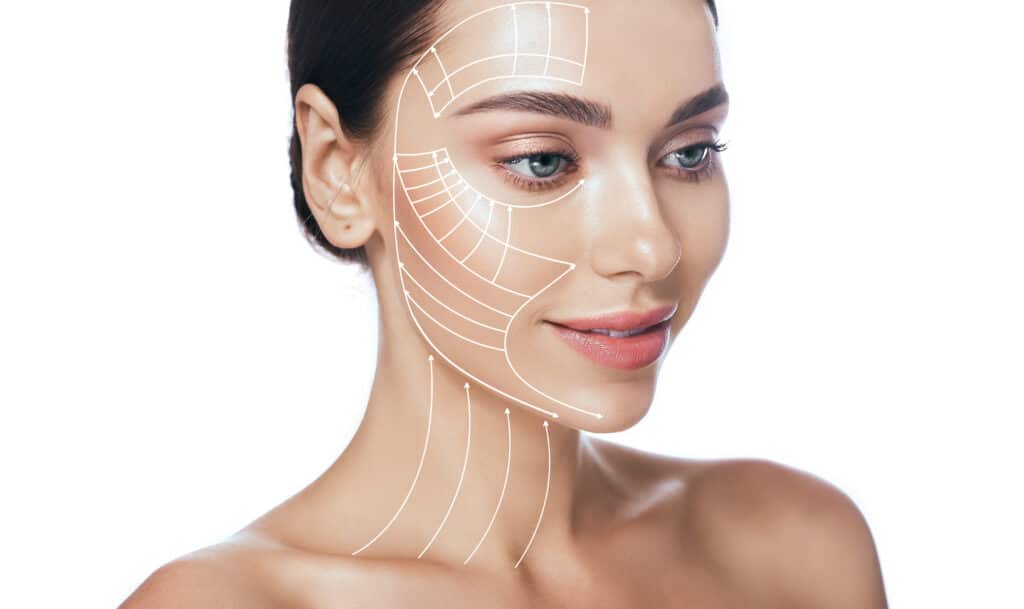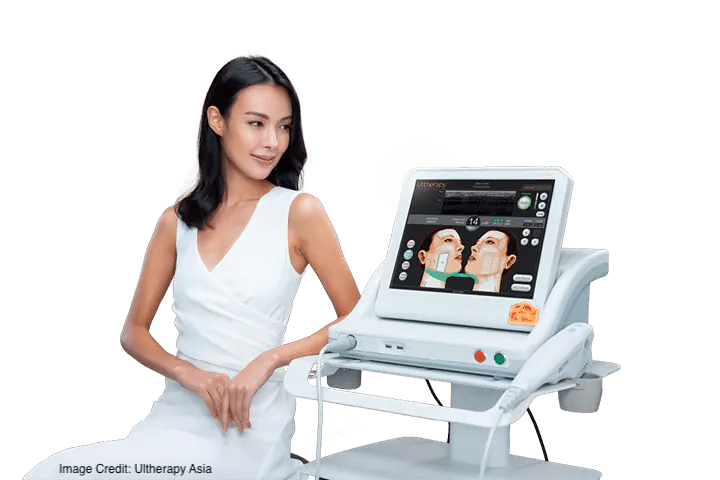
What You Need To Know About Ultherapy Before Choosing It
- February 28, 2024


Both men and women turn to cosmetic treatments to regain and preserve their youthful appearance. Ultherapy, a non-invasive procedure that uses focused ultrasound to gradually lift and tighten the skin, is a common treatment in Singapore.
If you’re thinking about Ultherapy, there are certain factors to consider before deciding on it. Let’s delve into them.
One of the first things to understand about Ultherapy is that it is designed to work gradually. Unlike some cosmetic treatments where changes are immediately noticeable, Ultherapy works by collagen stimulation, a process that supports skin elasticity through skin repair. This process takes place over 6-12 months, with results peaking at the 3-month mark.
Ultherapy’s rejuvenating effects are known to last for an extended period. While individual results may vary, many patients experience long-term benefits of one to two years, and periodic maintenance treatments can further enhance and prolong the outcomes.
While Ultherapy offers a non-surgical alternative to more invasive treatments like facelifts, it may not yield the same dramatic results, especially for individuals with extremely loose skin.
Ultherapy relies on focused ultrasound energy to reach the deeper layers of the skin, stimulating collagen production. However, it may not match the tissue manipulation and repositioning achieved through surgical facelifts, where excess skin is removed, and underlying muscles and fibres are tightened.
The results of Ultherapy tend to be more natural-looking. It is particularly well-suited for individuals seeking subtle lifting and tightening of mild to moderate sagging skin.
The success of Ultherapy is highly dependent on the expertise of the performing practitioner. Their role extends beyond merely operating the Ultherapy device, and their knowledge, experience, and technique will influence the effectiveness of the treatment.
The practitioner’s skill determines the appropriate depth at which the ultrasound energy should be delivered, as well as the amount of energy delivered. Slight modifications to the treatment protocol may be needed based on each individual’s facial profile and severity of sagging. Such individualised customisation allows precise targeting of the treatment area and ensures the best lifting and tightening outcomes.
Ultherapy is generally well-tolerated. Most people who have undergone Ultherapy describe the sensation as tingling, warmth, or a mild prickling feeling. Our doctors will offer pain management options to make your experience more comfortable.
At SL Aesthetic Clinic, our strategies to reduce discomfort include the use of numbing cream, prescribing oral painkillers, providing vibration for distraction and playing light music in the background.
Like any cosmetic treatment, Ultherapy can have side effects. Fortunately, these are usually mild and temporary. These may include redness, swelling, bruising, blisters, or tingling. They should not last for more than a few hours and you can go back to work immediately after.
It is important to discuss the benefits and side effects of Ultherapy, as well as other alternative treatment options with your practitioner. This will help you decide if Ultherapy is the right choice for you
Ultherapy may not be suitable for individuals with medical conditions, such as skin disorders. Examples are lesions or open wounds in the treatment area, severe or cystic acne in the treatment area, or active implants such as pacemakers and defibrillators in the treatment area. You should speak to your doctor about such conditions before undergoing treatment.
Pregnant women are also advised to postpone Ultherapy treatment until after childbirth.
Before undergoing Ultherapy treatment, a thorough consultation with a qualified healthcare professional is essential. This step allows them to assess your needs, discuss potential risks, and help you determine if Ultherapy aligns with your goals.
The practitioner can also provide a realistic overview of what Ultherapy can achieve based on your skin type and degree of ageing. This helps manage expectations and ensures you clearly understand the potential outcomes.
The Ultherapy treatment process begins with ultrasound imaging, which allows the practitioner to visualise the layers of tissue beneath the skin’s surface.
Once the targeted areas are identified, the Ultherapy device emits focused ultrasound energy deep into the foundational layers of the skin. The energy is directed to specific depths, typically reaching the same layers addressed in surgical facelifts.
The focused ultrasound energy generates a controlled thermal effect in the skin’s deeper layers, triggering a natural healing response and producing new collagen. As collagen production increases, the existing collagen fibres undergo a remodelling process. This results in tighter, more lifted skin over time.
Ensure you are getting treatment with the real Ultherapy machine, and not a counterfeit passed off as Ultherapy. The best way to verify is to check if the practising clinic has a certificate of authenticity, and if the machine has real time imaging. This real time imaging/DeepSEE technology is unique to Ultherapy.
While the Ultherapy procedure itself is non-invasive and requires minimal downtime, post-treatment care is essential to optimise and maintain the results. Here are some guidelines to ensure a smooth recovery and prolonged benefits:
Gentle Skincare Routine
After Ultherapy, adopt a gentle skincare routine to nurture your rejuvenated skin. Use mild cleansers and moisturisers to keep your skin hydrated without causing irritation. Avoid harsh chemicals, abrasive exfoliants or hot saunas in the immediate days following the procedure.
Sun Protection
Shield your skin from the sun’s harmful rays by applying a broad-spectrum sunscreen with at least SPF 30, and reapply frequently throughout the day. Sun exposure can compromise the healing process and impact the longevity of your results. Wear protective clothing and accessories, especially during peak sunlight hours.
Avoid Intense Physical Activities
While Ultherapy allows for a quick return to normal activities, it’s advisable to refrain from intense physical exercises for a few days. Give your body the time it needs to recover without placing undue stress on the treated areas.
Hydration is Key
Stay well-hydrated to support your body’s natural healing processes. Drinking an ample amount of water can contribute to the overall health and appearance of your skin. Hydration aids in collagen production, enhancing the lifting and tightening effects of Ultherapy.
Follow Practitioner’s Recommendations
Adhere to any specific post-treatment instructions provided by your practitioner. They may offer tailored advice based on your individual needs and the areas treated. If you have any concerns or questions during the recovery period, don’t hesitate to reach out to your healthcare professional.
Avoid Excessive Heat Exposure
Steer clear of saunas, hot baths, or prolonged exposure to hot environments immediately after Ultherapy. Excessive heat can exacerbate temporary side effects and potentially compromise the outcomes of the treatment.
While Ultherapy stimulates collagen production to give you a younger appearance, we must remember that the natural ageing process still continues as time passes. Periodic maintenance treatments are advisable to sustain the results over time.
Discuss long-term maintenance plans with your practitioner to sustain the benefits of Ultherapy. They can advise on the frequency of follow-up treatments and recommend additional skincare practices to support the ongoing health and vitality of your skin.
Remember, each individual’s response to Ultherapy may vary, and adhering to these post-treatment care guidelines will contribute to a positive and successful outcome. If in doubt, always consult with your healthcare professional for personalised advice tailored to your specific needs.
The price of Ultherapy can vary based on the treated area and the number of sessions required. We advise you to have a transparent discussion with your practitioner about the overall cost, including potential follow-up treatments.
Understanding the necessary financial investment can help you prepare accordingly.
You should consider Ultherapy if:
You have mild to moderate skin laxity: Ultherapy is best for individuals who want to treat mild to moderate skin sagging or laxity. It can provide a non-surgical solution to lift and tighten areas such as the face, neck, and décolletage.
You want to take preventive measures: Individuals wishing to address early signs of ageing or looking for preventive measures may consider Ultherapy. It can stimulate collagen production before significant sagging occurs, helping maintain a youthful appearance.
You prefer a non-surgical procedure: For those who prefer non-surgical or minimally invasive treatments, Ultherapy offers an attractive option. It avoids incisions, has minimal downtime, and is generally well-tolerated, making it appealing to individuals who want to avoid more invasive procedures.
You have a busy lifestyle: Ultherapy is suitable for individuals with busy schedules. The treatment calls for minimal downtime and would allow you to return to normal routine shortly after the procedure.
You want to improve firmness and elasticity: Ultherapy is ideal for people who want to improve skin firmness and elasticity through stimulating collagen production.
You have realistic expectations: Ideal candidates for Ultherapy are those with realistic expectations about the outcomes of non-invasive treatments. While it provides a noticeable improvement, it does not replicate the drastic transformation that surgery may achieve.
You are in good general health: Candidates for Ultherapy should be in good overall health. During the consultation, a comprehensive health assessment helps identify potential contraindications and ensures the procedure’s safety.
If you are considering Ultherapy for skin rejuvenation, you should be well-informed before making a decision. By understanding the points mentioned in this article and consulting with experienced professionals, you can start your journey to a more lifted and youthful appearance.
At SL Aesthetic Clinic, we look forward to guiding you through the Ultherapy treatment experience and helping you achieve the results you desire. Our experienced practitioners in Singapore are dedicated to understanding your skin rejuvenation needs and tailoring Ultherapy treatments to achieve the best possible outcomes.
Like what you read? Share them!